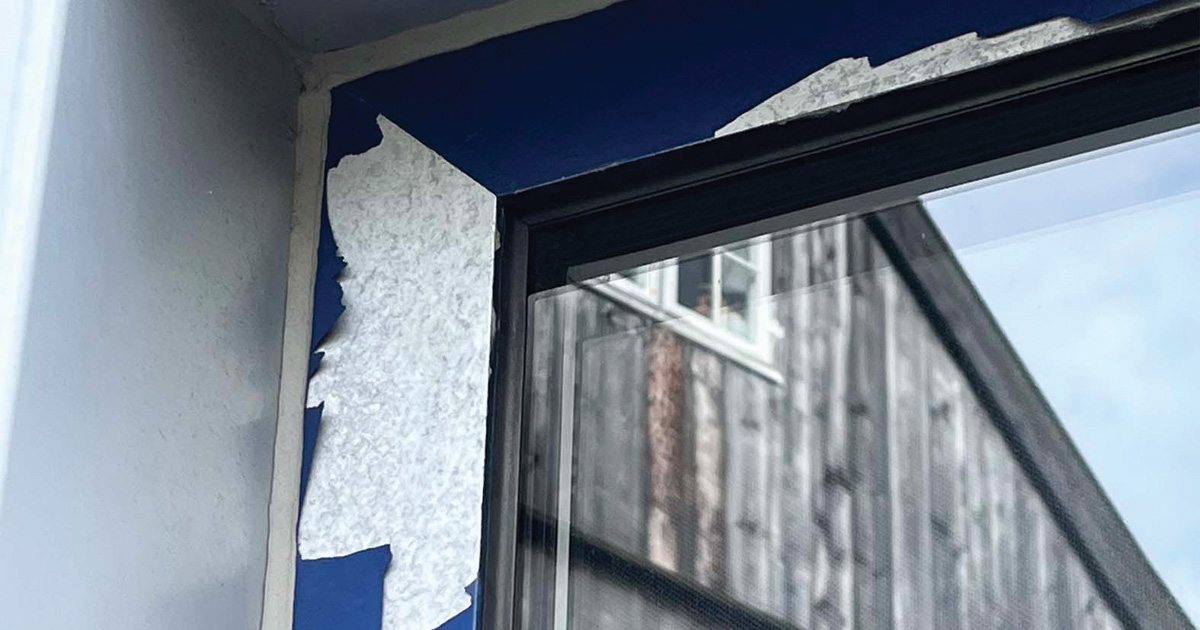Chris Mansfield QUALICOAT Chair explains: “Beware of cheap powder coating! It may seem obvious to most, but can you name your powder coater, for all your products?
Buying powder coated products from your aluminium systems supplier will guarantee powder coat quality, but what about those ancillary items, pressed cills, or additional profiles that are required quickly to meet an unexpected size change or an error in cutting?
These profiles need to be coated to the very same quality if you are to minimise site problems. There are many powder coaters across the UK, but few carry the necessary heavy investment of suitable pre-treatment facilities required for powder coatings to withstand the UK’s harsh climate.
So why do failures occur in residential applications?
Poor surface prep is the number one culprit, the lack of good pretreatment of the aluminium. Powder coatings only adhere to perfectly clean metal, and aluminium window and door systems must be degreased/etched so no traces of oil, dirt or oxide remains. Any contamination left on the frame will cause failures “by lack of adhesion, blistering or peeling”. In practice, this means a fingerprint, oil smear or even salt spray on the aluminium will block bonding. During curing any trapped moisture or grease can vaporise and form blisters under the finish. Those hidden defects show up quickly as peeling edges or bubbling patches right where the metal wasn’t really clean or pre-treated.
Powder coating application errors make things worse. Even if the frame is clean, the powder coat still must be applied and oven cured correctly. If the coating is sprayed on too heavily (or unevenly), it may sag or crack as it hardens. Equally important is the oven temperature profile. If the powder isn’t cured at the correct temperature, or for long enough, the coating will not fully harden. A partially cured coating will not adhere to the aluminium and will flake, chip or peel off under stress. In plain terms, any shortcut in the powder application or oven curing process creates a weakness that will soon show up as chips, bubbles or peeling of the coating.
Outdoor exposure will expose a weak finish. Strong sun and weather will slowly degrade any powder coat over time. UV rays break down the paint’s resin, causing the finish to fade and chalk (a white, powdery residue). Likewise, moisture and salt air can infiltrate tiny cracks and as the coating is porous moisture and air will get through the coating. Salts or soluble deposits on the metal will in fact pull in water through the powder coating and create surface blisters (an “osmotic blistering” effect). In practice, this means a poorly applied coating in a humid or coastal climate will show chalking, peeling and bubbling in a short space of time.
The key is quality and consistency of quality in the production of powder coated aluminium profiles, assemblies and sheet products. The industry knows why failures occur by cutting corners to save cost, but a poor coating can take up to a year or so on site to begin to show a failure, so many poor quality finishes are rarely repaired giving powder coating a dubious reputation.
BS EN 12206-1:2021, ‘Paints and varnishes. Coating of aluminium and aluminium alloys for architectural purposes Coatings prepared from thermosetting coating powder’ details the minimum requirements for quality architectural powder coating including a robust pre-treatment system. Meeting the standard can be claimed by a powder coater, but there are no third party inspections to protect the customer.
The QUALICOAT Specification, formed back in 1986, now has a global following and is the only licensed specification which is third party accredited. There are now thirty powder coaters across the UK and Ireland who are licensed coaters. All the major aluminium systems companies now use the Specification and if additional profiles or pressings are required a QUALICOAT licensed coater is not far away. If you keep to specifying QUALICOAT for all your aluminium coatings you are offering your customers the best quality finishes that are available in the industry.
QUALICOAT is the worlds only global specification for architectural powder coating. Since 1986 the Association has pioneered the development of powder coating technology through its membership and continue to improve specification documents that all of its members are obliged to follow. The Specification not only specifies the robustness of the finished coating, but also details process controls which are crucial to maintaining quality. By ensuring Members are third party assessed to demonstrate compliance with the Specification ensures consistent quality, a Member of the Association demonstrates this accreditation by proudly displaying their QUALICOAT logo and licence number.”



